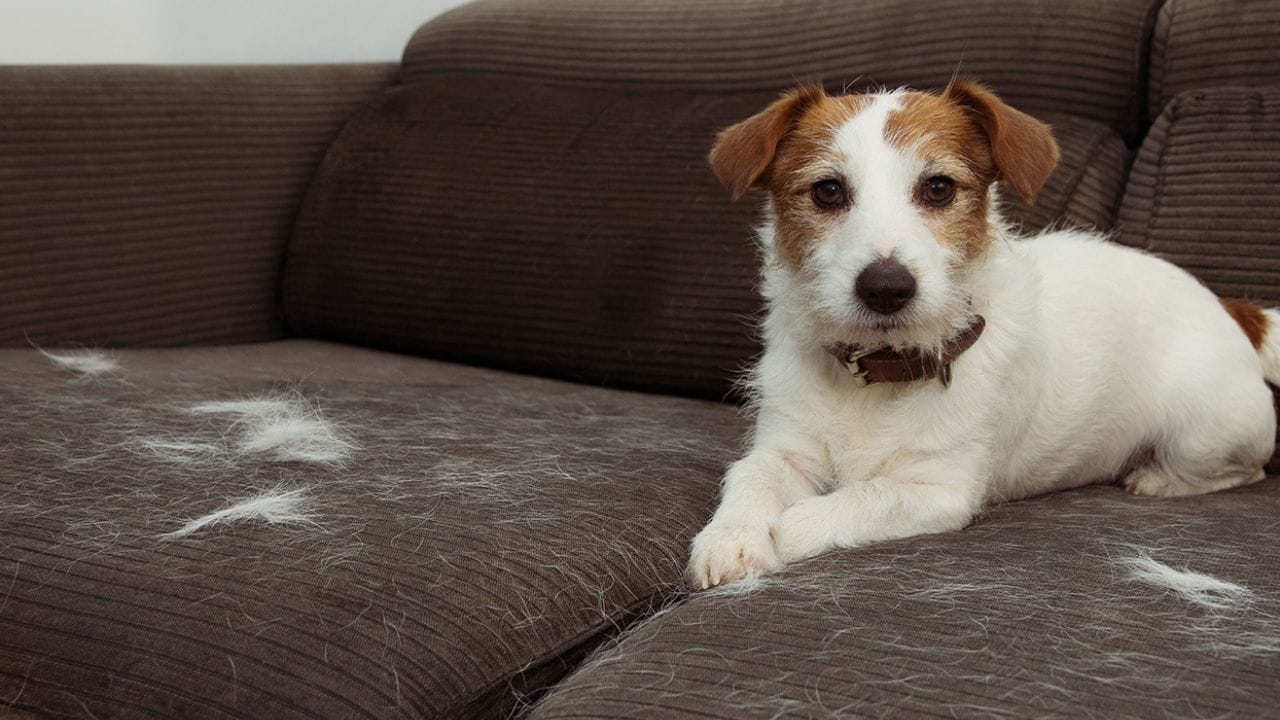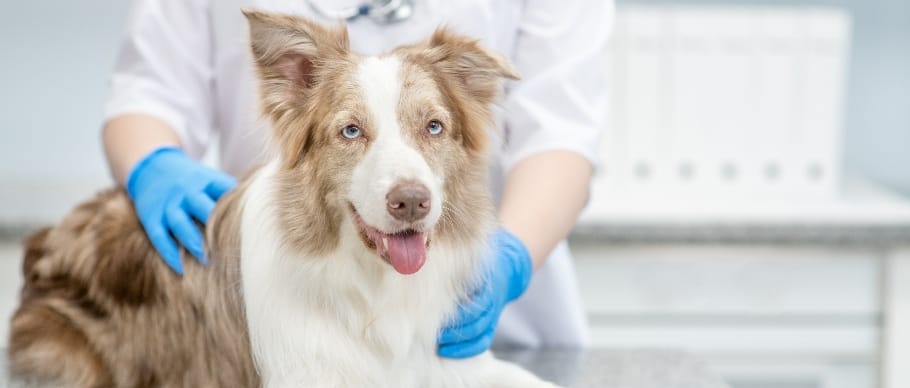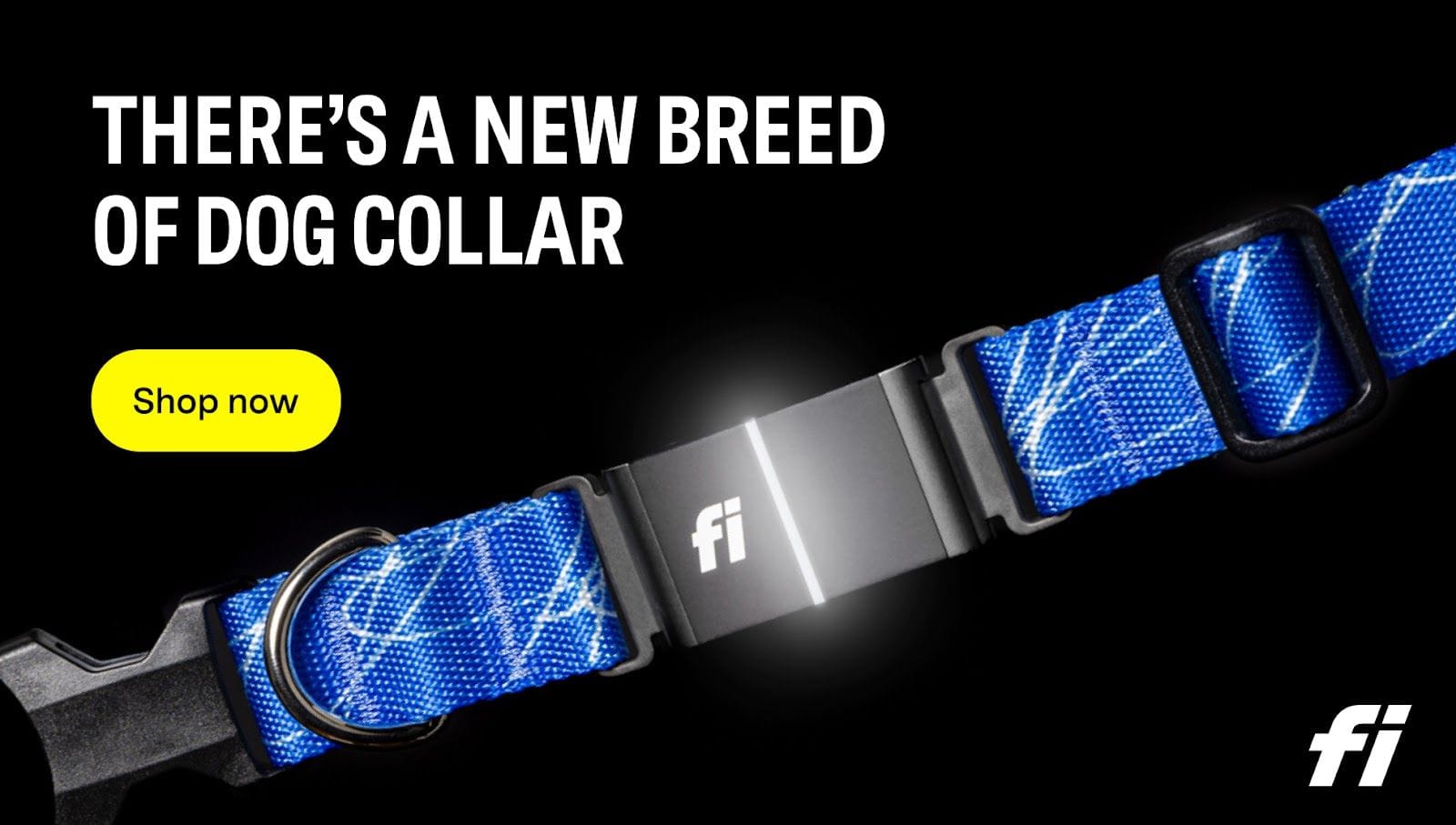Dogs are known for their loyalty, companionship, and playful nature. However, one aspect that can be challenging for dog owners is shedding. Shedding is a natural process that dogs go through to get rid of old or damaged fur. While some breeds shed more than others, all dogs experience shedding to some degree. Understanding the shedding process and how to manage it can make a significant difference in the life of a dog owner.

During shedding season, dogs lose their fur in large quantities, which can be frustrating for pet owners. Shedding seasons vary depending on the breed and the climate. Some dogs shed year-round, while others shed seasonally. It is essential to understand the shedding patterns of your dog to manage it effectively. Proper grooming and maintenance can help reduce shedding and keep your dog's coat healthy and shiny.
Key Takeaways:
- Shedding is a natural process that all dogs go through to get rid of old or damaged fur.
- Shedding seasons vary depending on the breed and the climate, and it is crucial to understand your dog's shedding patterns to manage it effectively.
- Proper grooming and maintenance can help reduce shedding and keep your dog's coat healthy and shiny.
Understanding Dog Shedding
The Basics of Shedding
Shedding is a natural process in which dogs lose their old and damaged hair to make way for new hair growth. It is a normal part of a dog's hair growth cycle and is influenced by various factors such as age, breed, health, and the environment.
Dogs shed year-round, but some breeds shed more than others, and some dogs have seasonal shedding patterns. Spring and fall are the most common shedding seasons, as dogs shed their winter and summer coats, respectively.

Factors Influencing Shedding
Several factors influence a dog's shedding patterns, including their coat type, hair growth cycle, and overall health. Double-coated breeds, such as Poodles, Newfoundlands, and Golden Retrievers, have two layers of fur and tend to shed more than single-coated breeds, such as Collies and Labrador Retrievers.
A dog's hair growth cycle also plays a role in shedding. Dogs with faster hair growth cycles tend to shed more frequently than those with slower cycles. Additionally, a dog's overall health, including their skin and hair health, can affect their shedding patterns.
Different Coat Types
There are several different coat types that dogs can have, including double coats, single coats, wiry coats, and curly coats. Double-coated breeds have a soft undercoat and a coarser outer coat, while single-coated breeds have only one layer of fur. Wiry coats are rough and bristly, while curly coats are soft and tightly curled.
Each coat type has its own shedding pattern and requires different grooming techniques to maintain healthy skin and hair.
Shedding Across Dog Breeds
Different dog breeds have different shedding patterns, and some breeds are more prone to shedding than others. Breeds such as Akitas, German Shepherds, Siberian Huskies, and Welsh Corgis are known for shedding heavily.
It is essential to research a breed's shedding tendencies before adopting a dog to ensure that you can provide the necessary grooming and care.
Health and Shedding
A dog's overall health can affect their shedding patterns. Healthy skin and hair are essential for minimizing shedding. A well-balanced diet, regular exercise, and grooming routines can help maintain a healthy coat and reduce shedding.
If you notice excessive shedding or changes in your dog's shedding patterns, it is essential to consult with a veterinarian. Shedding can be a sign of underlying health issues, such as allergies or skin infections.
Myths About Dog Shedding
There are several myths about dog shedding, such as shaving a dog's coat will reduce shedding or that certain breeds are hypoallergenic. However, these claims are false. Shaving a dog's coat can actually damage their hair growth cycle and lead to more shedding. Additionally, no breed is entirely hypoallergenic, as all dogs produce dander and shed to some extent.

Understanding a dog's shedding patterns and coat type is essential for maintaining healthy skin and hair and reducing shedding. Regular grooming and care can help keep shedding under control and ensure a happy and healthy dog.
Grooming and Maintenance
Keeping a dog's coat well-maintained is essential for both their health and your comfort. Regular grooming can help reduce shedding and prevent matting, which can lead to skin irritation and infection. Here are some tips for grooming and maintenance.
Regular Brushing Techniques
Brushing your dog's coat regularly is the most effective way to reduce shedding. Using a coat rake or slicker brush can help remove loose hair and prevent matting. When brushing, start from the head and work your way down to the tail, being gentle around sensitive areas such as the ears and belly.
Bathing and Shedding
Bathing your dog can also help reduce shedding, but it is important to use a de-shedding shampoo and conditioner to help loosen and remove dead hair. Be sure to rinse thoroughly to avoid leaving any residue that can irritate the skin. After bathing, towel dry your dog and use a blow dryer on a low setting to finish drying their coat.
Professional Grooming
If you are not comfortable grooming your dog yourself, consider taking them to a professional groomer. They can provide a full grooming service, including trimming and shaping the coat, which can help reduce shedding and keep your dog looking and feeling their best.
Home Cleaning Solutions
To manage shedding in your home, regular vacuuming and using lint rollers can help remove loose hair from furniture and floors. You can also use a damp cloth or rubber gloves to pick up hair from surfaces such as upholstery and carpets.
Managing Shedding for Allergy Sufferers
If you or someone in your household suffers from allergies, managing shedding can be especially important. Regular grooming, bathing, and cleaning can help reduce allergens in the home. Consider using a HEPA air filter and keeping your dog out of certain areas of the house, such as bedrooms. Consult with your veterinarian for additional recommendations on managing allergies.
Seasonal Shedding Patterns
Dogs shed their fur throughout the year, but there are certain times when they shed more heavily than usual. These periods are commonly referred to as shedding seasons. Shedding seasons vary depending on the breed, climate, and other factors, but they generally occur in the spring and fall.
Spring Shedding
In the spring, dogs shed their winter coats to prepare for the warmer weather. This shedding is also known as "blowing coat." Dogs with double-coats, such as Huskies, Golden Retrievers, and German Shepherds, shed heavily during this time. The undercoat, which provides insulation during the winter, is shed to allow for better air circulation and to keep the dog cool in the summer.
During the spring shedding season, it is important to brush your dog regularly to remove loose fur and prevent matting. A de-shedding tool can also be helpful in removing the undercoat. It is important to note that excessive shedding or bald patches may be a sign of an underlying health issue, and a veterinarian should be consulted if this occurs.
Fall Shedding
In the fall, dogs shed their summer coats to prepare for the colder weather. This shedding is also known as "blowing coat." Dogs with double-coats, such as Huskies, Golden Retrievers, and German Shepherds, shed heavily during this time. The undercoat, which was grown during the summer to provide insulation, is shed to allow for a thicker, warmer coat to grow in.
During the fall shedding season, it is important to brush your dog regularly to remove loose fur and prevent matting. A de-shedding tool can also be helpful in removing the undercoat. It is important to note that excessive shedding or bald patches may be a sign of an underlying health issue, and a veterinarian should be consulted if this occurs.
Advanced Shedding Management
Dogs shed their fur as a natural process to get rid of old or damaged hair. However, excessive shedding can be a cause of concern for pet owners. Advanced shedding management can help reduce shedding and keep your dog's coat healthy and shiny.
Diet and Nutrition
A balanced diet is essential for healthy skin and hair, which can help reduce shedding. Feeding your dog a diet rich in omega-3 and omega-6 fatty acids, such as fish and flaxseed oil, can promote healthy skin and reduce inflammation. Additionally, adding supplements like biotin and vitamin E can improve the quality of your dog's coat and reduce shedding.
Supplements and Shedding
Supplements can play a crucial role in managing shedding. Omega-3 and omega-6 supplements can help promote healthy skin and reduce inflammation, while biotin and vitamin E supplements can improve coat quality and reduce shedding. It is essential to consult with your veterinarian before adding any supplements to your dog's diet.
Innovative Shedding Control Products
Innovative shedding control products like de-shedding shampoos, coat rakes, and lint rollers can help reduce shedding. De-shedding shampoos can help remove dead hair and reduce shedding, while coat rakes can remove loose hair from your dog's coat. Lint rollers can help remove loose hair from furniture and clothing.
In conclusion, advanced shedding management can help reduce shedding and keep your dog's coat healthy and shiny. A balanced diet, supplements, and innovative shedding control products can all play a crucial role in managing shedding. Consult with your veterinarian to determine the best shedding management plan for your dog.
When to Consult a Veterinarian
Dogs naturally shed their fur, but sometimes there can be underlying health issues that cause excessive shedding or other unusual patterns. If you notice any of the following signs, it's best to consult with a veterinarian to ensure your dog's health:

Unusual Shedding Patterns
If your dog is shedding excessively, or if there are bald patches or clumps of hair falling out, it could be a sign of an underlying health issue. Some common causes of unusual shedding patterns include hormonal imbalances, stress, and poor nutrition. A veterinarian can help determine the underlying cause and provide appropriate treatment.
Skin Conditions and Shedding
Skin conditions such as infections, allergies, and parasites can cause excessive shedding and other skin issues. If your dog is scratching, biting, or licking their skin excessively, or if you notice redness, bumps, or scabs, it's important to consult with a veterinarian. They can diagnose and treat the underlying skin condition, which will improve your dog's overall health and reduce shedding.

Allergies and Sensitivities
Allergies and sensitivities to food, environmental factors, and grooming products can cause skin irritation, which can lead to excessive shedding. If you notice your dog scratching, biting, or licking themselves more than usual, or if you notice a rash or hives, it's important to consult with a veterinarian. They can help identify the allergen and provide appropriate treatment, which will reduce shedding and improve your dog's overall health.
In conclusion, if you notice any unusual shedding patterns, skin conditions, or signs of allergies or sensitivities, it's important to consult with a veterinarian. They can help diagnose and treat underlying health issues, which will improve your dog's overall health and reduce shedding.
Frequently Asked Questions
- What can I do to manage my dog's shedding during peak seasons?
- To manage your dog's shedding during peak seasons, you can groom your dog regularly. Brushing your dog's coat daily can help to remove loose fur and prevent mats from forming. You can also consider using a deshedding tool to remove excess hair. Additionally, you can provide your dog with a healthy diet and ensure they are getting enough water to promote healthy skin and coat.
- How can I tell if my dog's shedding is normal or excessive?
- Normal shedding is a natural process that occurs throughout the year. However, excessive shedding can be a sign of an underlying health issue. If you notice bald spots, irritated skin, or excessive itching, it's best to consult with your veterinarian.
- What are the common times of year when dogs shed their coats?
- Dogs typically shed their coats twice a year, during the spring and fall. However, some breeds may shed year-round or have irregular shedding patterns.
- Are there particular breeds that shed more seasonally than others?
- Yes, some breeds shed more seasonally than others. Breeds such as the Husky, Golden Retriever, and Labrador Retriever tend to shed heavily during peak shedding seasons.
- What are effective grooming techniques for dogs during their shedding season?
- Effective grooming techniques for dogs during shedding season include daily brushing, using a deshedding tool, and bathing with a high-quality shampoo. It's also important to trim your dog's nails and clean their ears to prevent infections.
- Can a dog's diet influence the amount and frequency of shedding?
- Yes, a dog's diet can influence the amount and frequency of shedding. A diet rich in essential fatty acids, vitamins, and minerals can promote healthy skin and coat, which can reduce shedding. Additionally, providing your dog with enough water can help to keep their skin hydrated and healthy.






